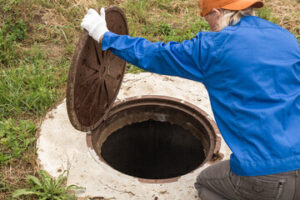Home » Posts tagged 'Home Inspection'
Tag Archives: Home Inspection
The Costs of Septic Inspection
There are many costs associated with Septic Inspection. The amount of money you will spend on the inspection will depend on the amount of work needed before the inspection can take place. For instance, you can save a lot of money by digging up buried septic tank covers before the inspection. Some inspectors will also include the cost of digging in their price.
 When buying a home, a septic inspection is typically a contingency in the real estate contract. Septic Inspection Connecticut will examine the septic system and check for leaks and other issues. They will also test the system for water pressure, which shows if it can handle water. The drain field will also be visually inspected for standing water. If any of these problems are present, it’s time for a replacement.
When buying a home, a septic inspection is typically a contingency in the real estate contract. Septic Inspection Connecticut will examine the septic system and check for leaks and other issues. They will also test the system for water pressure, which shows if it can handle water. The drain field will also be visually inspected for standing water. If any of these problems are present, it’s time for a replacement.
Various tools are used in a septic system inspection, depending on the type of inspection performed. Some of these tools are relatively simple, while others can be complex and expensive. However, they can help you ensure that your septic system works correctly.
The first step in a septic system inspection is to locate the underground storage tank. This can be done by looking at “as-built” drawings for the house. You can also ask the local health department for this information. Another tool is a septic tank locator, which locates underground tanks using electronic equipment. However, it can give false readings if the house has an old foundation. It would be best if you also were careful not to dig over the septic tank, as it can damage the structure.
In addition, a sludge judge is used to check for sludge levels in a septic tank. The sludge level should be less than one-third of the tank’s volume. Also, the sludge level should not exceed the level of the baffles. Finally, the septic system must be far away from wells and streams.
Having a septic system inspection performed on a home is very important. The inspection can uncover minor and major problems and should be scheduled before selling your home. Your family’s health is at stake, and you need to know if there are problems.
The first step of a septic system inspection is obtaining the information required for a thorough assessment. This will give your inspector a better sense of what to look for. First, your inspector will check your drain field and system to ensure they operate properly. Also, they will look for cracks or damage. A cracked drain field can cause wastewater to back into your home through toilets and sinks.
Another common problem that inspectors check is the leach field. Standing water in the leach field signifies a serious septic system problem. In some cases, the system could require extensive repairs to fix, or it may even require a new tank.
When buying a house, it is crucial to determine the septic system’s age and condition. It may be simple to fix a minor problem, but a faulty system could lead to more costly repairs or replacements. Having an inspection performed can help you make an informed decision, saving you money in the long run.
A septic inspector will check wastewater levels and run water through the system to uncover any hidden drainage problems. They may also pump out the septic tank and monitor for backflow issues. A septic inspection should be done at least once every three years, but it may need to be performed more often if the system is older.
Whether buying a home with a septic system or selling your house, a septic inspection is a necessary part of the process. The inspector will check the septic tank, distribution box, and leach field to ensure they are functioning correctly. The inspector will also look for any signs of pest infestation.
The inspection should take place without disturbing the system. This means any maintenance holes, cleanouts, or covers must be removed before beginning the inspection. If necessary, the inspector may need to pump system components. If the pumping is necessary, the inspector can do the rest of the inspection after the pumping is complete.
If your home has a septic system, you should ensure it is clean, vented, and well-maintained. Regular cleaning with baking soda or water softener backflushing will help keep it in good condition. You should also keep maintenance records of your system, including a sketch. It’s also important to take regular care of your home’s surroundings, as roots from nearby trees can cause problems with your SAS.